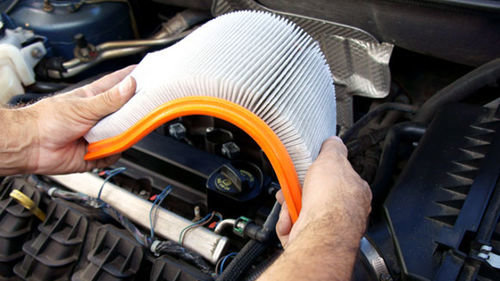A dirty air filter reduces performance and can be damaging to your engine
If your mom or dad loved to dispense auto advice (and who didn’t?) you’ll often remember the admonishment to have your vehicle’s engine air filter checked regularly. When you were silly enough to ask why, the one-hour explanation could be boiled down to gas mileage, performance, and engine protection. Well at least two of those reasons still hold water.
In our parents’ days when carbureted engines were the norm, a dirty air filter really could cause fuel economy to dive. Carburetors had no way of metering the amount of air coming into their throttles, so if they were starved of oxygen due to a dirty filter, they simply kept pumping fuel into the cylinders at the same rate as if the filter was clean. But the resulting combustion was compromised leading to a host of problems such as fouled plugs, misfires, fuel-contaminated oil, and more.
Fast forward to today’s fuel injected engines that have sensors to determine how much air is getting past the filter (whatever its condition). This means that the amount of fuel being delivered to the engine can be adjusted to make up for a poor air flow due to a dirty filter. So fuel economy really doesn’t suffer much, but that’s no reason not to regularly inspect an engine air filter.
Performance will suffer when an air filter gets dirty enough. Usually it’s a gradual decline and often hard to notice. The biggest risk a dirty air filter presents is allowing grit to get past it and into the engine intake. This can severely damage an engine’s cylinder walls leading to some major repair bills.
Any oil change tech worth his or her salt will dutifully check air filters every time, but with automaker recommended service intervals stretching to the max, this means you may go months between inspections. Fortunately for most vehicles, checking the air filter is a relatively easy job that doesn’t require any tools. If your ride is one of the few that does require a wrench or screwdriver to get the air filter box cap off, it might be worth your while to buy the appropriate tool to leave in the glove box.
Most air filter access covers have a large diameter flexible hose attached that channels filtered air into the engine’s intake. These are pliable enough to allow the filter to be easily removed but don’t flex them too much (especially in colder weather) to avoid breaking them. They often have a sensor in them so be aware of the wiring so as not to damage it or the sensor. Then remove the filter taking note of which is the up side versus the down (it’s not always obvious). Flex the filter to expose the valleys of the paper substrate to look for visible grit. If any more than a dozen grains or so are present per fold, then it’s time for a new filter. Tap the filter (down side down) on your hand to see what comes out. Again if there’s enough to sparsely cover your palm, get a new filter. If there’s any grit on the bottom of the air filter box, grab your vacuum or a damp cloth and clean it out.
If you see any accumulation of fluff or seeds in the air box, you may have an unwelcome resident that can cause a lot more damage than a dirty air filter. A few sprays of natural peppermint oil (diluted with warm water at 8:1) should put out the no vacancy sign.









